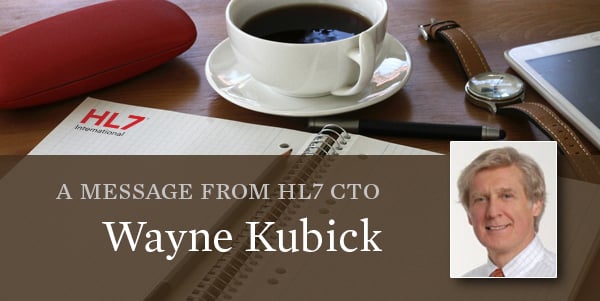
Our ongoing tooling journey at HL7 continues, neither as a sprint nor a marathon. For us, it’s really more like an odyssey – an ongoing journey where there is always something more to be done, another path to explore, and a final destination (retirement, for example) seems far out of reach. In the case of HL7 tooling, a fair number of tooling retirements are well overdue.
Despite the wait, it’s gratifying to see when tangible progress is actually achieved. On the Confluence front, we’re in the home stretch of phase 1 of the rollout, though there’s a whole new course to pursue just around the bend. We now have all work groups on Confluence (!) and have also migrated many more projects, committees and collaborations. New functions and help features in Confluence (including a major facelift for confluence.hl7.org) are being added regularly, and you can keep up with these by checking the CTO Tooling Update page. This enabling platform is already unleashing many new opportunities within the HL7 community. Our next target is to work toward optimizing our processes with online forms and workflow. The online project scope statement (PSS) pilot is now available and will give us an opportunity to speed up reviews and approvals as well as make new projects more visible to the community in the hope we can avoid last minute catchups.
Having 1-click access to forms will help enormously, but we also need to broaden our thinking. For example, we want all project leads to recognize that it’s important to declare the intention to begin a new project at the earliest stages rather than just before ballot. We need to see a more streamlined process to announce a new project at the earliest stage in order to allow those who want or need to participate to have the opportunity to jump in as well as to identify potential problems or risks before too much time is sunk navigating blind alleys. Because the Notification of Intent to Ballot (NIB) deadline is always too late. Early transparency leveraging the wisdom of crowds is critical to the operation of a healthy HL7 community.
This brings our focus on another critical destination in our journey – making each of these new collaboration tools excel as a single source of truth. For Confluence, this will encompass not just meeting agendas and minutes, but also provide quick and easy access to all the information the committee needs to sail through the HL7 processes, including a new online handbook, precepts, Technical Steering Committee (TSC) guidance, forms and FAQs all one click away. Like the rest of our move, it means a search and destroy operation to remove all redundant, obsolete or inaccurate versions that can generate so much confusion and frustration. We want a simpler, leaner, more shipshape organization carrying us on this journey.
For JIRA, we’re beginning to implement solutions based on JIRA workflow, with Unified Terminology Governance process (UTG) entering a pilot stage with a goal to replace harmonization within a year, and for online forms like the PSS. The HL7 Fast Healthcare Interoperability Resources (FHIR®) community is already migrating issue tracking to the more robust JIRA environment, recognizing that building comfort and familiarity with JIRA is a useful prerequisite to making the transition to JIRA balloting. We still expect to begin balloting in JIRA later this year once we complete our system testing. Also, as mentioned previously, we’ll be using JIRA and Confluence to replace many other feedback, FAQ and support systems.
Another priority of the tooling roadmap is web publishing on microsites, which will become increasingly common in the future for other standards in addition to FHIR and Clinical Quality Language (CQL). Current efforts are under way to publish CDS-Hooks, Clinical Document Architecture (CDA®), Consolidated CDA (C-CDA), UTG terminologies and even Version 2 as web pages, among many others.
A less visible but critically important effort has been led by our Webmaster, David Johnson, on moving HL7 systems to the Cloud. This effort has been made possible through the support of Amazon Web Services. This increases reliability, scalability and performance for the basic activities of HL7, just as the support we’ve gotten from Google Cloud has achieved similar benefits in hosting FHIR servers. These advances, like so many, are made possible due to the generous support of HL7 members.
Making the Switch
Some have asked about whether we plan to sunset GForge and MediaWiki. Recognizing how difficult it is to migrate decades of content, we don’t have plans to sunset either of these tools in 2019. However, moving forward, we would prefer all new committee content to be created on Confluence instead of MediaWiki. Once the dust settles in moving from Tracker to JIRA later this year, we’ll be encouraging all work groups to forbear from creating new content in GForge.
Upcoming Destinations
Meanwhile, we’re continuing to move along a new series of projects to improve our tooling for standards development, with the help of ongoing funding support from the US Office of the National Coordinator for Health IT (ONC). Projects to re-engineer FHIR publishing and replace the ballot systems are already underway. We will continue to issue new requests for proposals (RFPs) for assistance from the community through the contractwork@lists.hl7.org listserv (Sign up for the Contract Work listserv here). The journey continues, and glad to have you all along on the ride.


